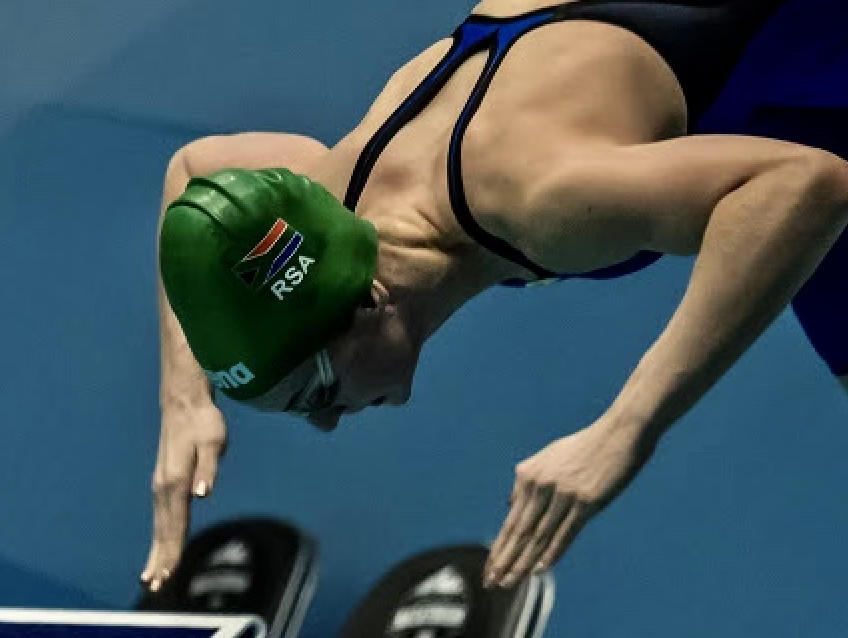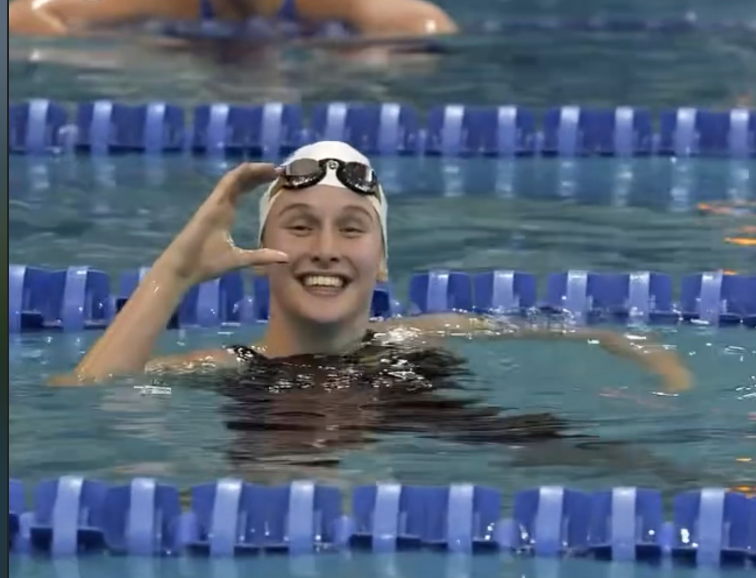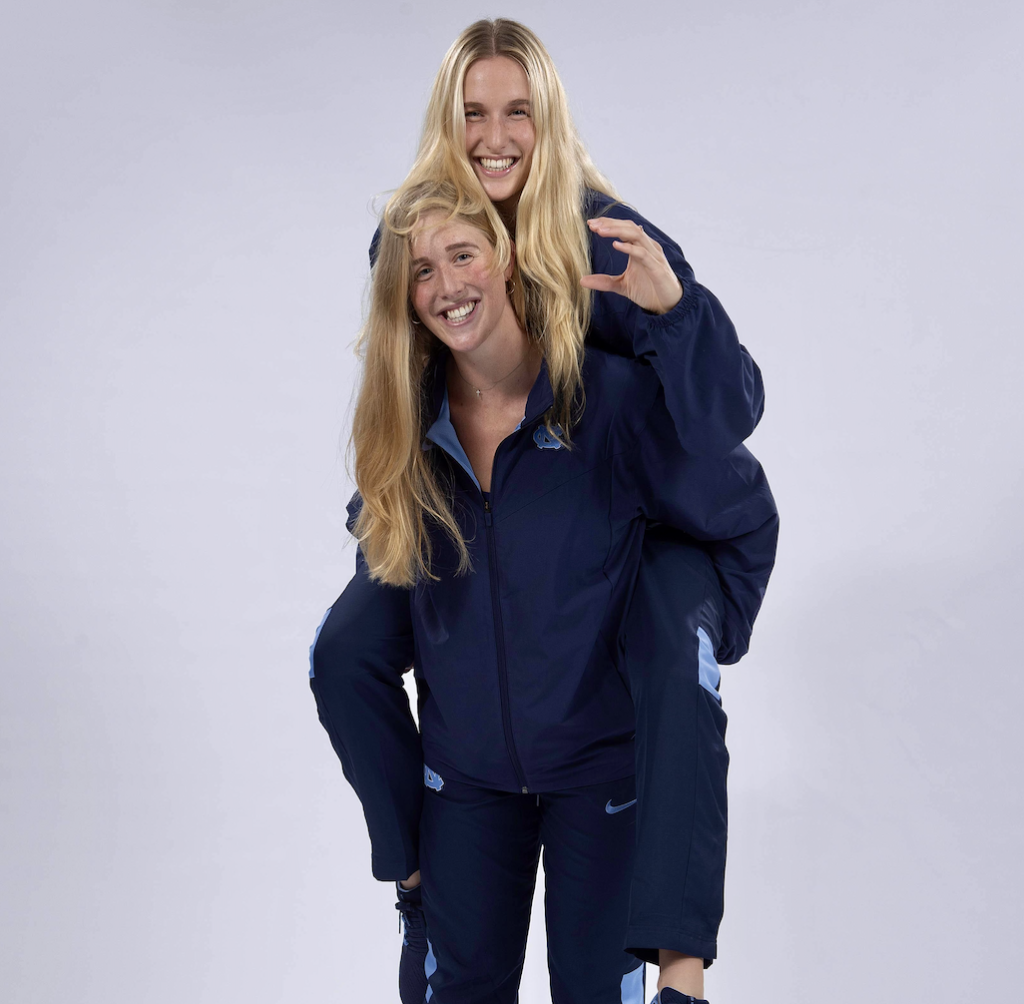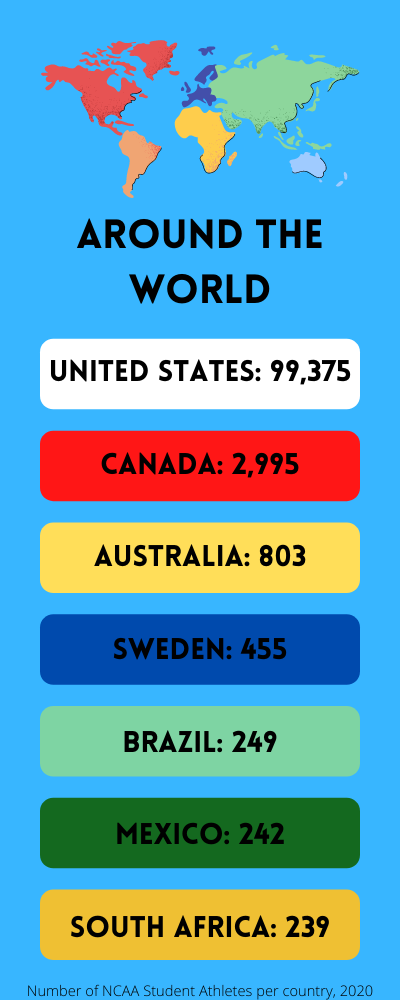A Deep Dive into the Lives of International Student Athletes


NCAA Athletics
The student athlete experience that the National College Athletic Association offers in the United States is unlike any other. Young athletes dream of going division 1 in their respective sport and dedicate endless hours of their childhood in perfecting their craft. With that in mind, less than 2% of athletes that compete in high school athletics make it to the division 1 level. When athletes make the decision to continue their education and athletic careers at the collegiate level, they are committing to a lifestyle that does not slow down for the duration of their time in college.
A day in the life of a division 1 athlete usually begins before the sun comes up. In one week, athletes are allotted 20 hours of organized practice time. To focus specifically on collegiate swimming, these hours are divided up between 6 days, usually allowing one day of rest, which leaves swimmers with over 3 hours of practice every day. This hour count does not include the class requirements and academic commitments that all athletes are expected to uphold. As the season progresses, competitions occur weekly, conflicting with these academic obligations, requiring professional time management skills.
As daunting as that sounds, the rewarding factors may be just as extravagant!! Throughout the 4 years of eligibility that an athlete signs up for, they have the chance to travel all around the country competing for their university with pride. As a collegiate athlete, there is something so special about wearing your school’s colors in competition, especially if they are Carolina blue.
Far, far, away…
When most kids begin the recruiting process, they are looking at their options across the country. By communicating with leaders of the athletic program, they will ultimately come to a decision that will change the track of their lives forever. These kids, starting as young as 15 year old, spend several months determining where they best fit by weighing factors like level of education, performance of the selected athletic program and location in relation to their hometown.
For some, the last point means much more. High level international athletes are also involved in this recruiting process, with hopes of immigrating to the United States to receive a prestigious education while also competing at the highest level of collegiate athletics. In many foreign countries, when athletes come of age that they complete the equivalent of a high school education to the United States, they are forced to make a life altering decision between their education and athletic pursuits. So, the appeal of coming to the States gleams with the chance to do both concurrently as there are over one thousand colleges and universities with athletic programs.
To focus on the NCAA, 358 institutions claim to have a division 1 athletic status. This status is determined by several factors including the amount of sports offered, types of sports, athletic department funding and scholarship availability. Of these 358 NCAA division 1 athletic departments, roughly 176,000 athletes compete at this level every year. As large of a number as that seems, less than 1 in 10 of those athletes is not a United States native. This small percentage emphasizes the leap of faith it takes to leave the comfort zone of their home country in pursuit of a once in a lifetime opportunity, seemingly impossible to pass up.
The athletic department at UNC Chapel Hill pride’s itself on the experience it provides for foreign student athletes. When speaking to Olivia Nel, a South Africa native on the UNC swim team, she attested that the monthly gatherings the athletic department coordinates for individuals like herself have become one of her favorite events on campus. By connecting with other international athletes, learning from their experiences and creating relationships outside of their team’s niche, they are able to form a bond that is incredibly unique.
What they have gotten into?
Everyone’s collegiate athletic journey is different, regardless of their background, past experiences or university they choose to attend. The beauty of that fact is the way these stories mesh together. In no other situation will countless individuals from all across the world be hand selected to form the highest possible performing roster. The relationships run deep, and the bond of a collegiate teammate lasts much longer than the NCAA eligibility span. It is no coincidence that the number of international athletes involved in collegiate athletics remains high, the inspiration that is instilled in young foreign athletes when they see the success’s their older counterparts had in the United States continues to drive the desire to reach the elite level it takes to make the journey.



Graphics created by Elizabeth Sowards on Canva
Text written by Elizabeth Sowards
